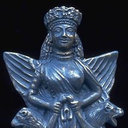The Healing Effect of Teucrium polium in Acetic Acid-Induced Ulcerative Colitis in the Dog as an Animal Model.
Sleutelwoorden
Abstract
BACKGROUND Inflammatory bowel diseases (IBD), which include ulcerative colitis (UC) and Crohn's disease (CD), are debilitating and chronic disorders with unpredictable courses and complicated treatment measures. Therefore, an efficient treatment protocol seems necessary as therapeutic prophylaxis for these disorders.This study aims to determine the healing effect of Teucrium polium (T. polium) in acetic acid-induced UC in an experimental dog model. METHODS From September to December 2010, eight male (20-25 kg) crossbred dogs were used for induction of UC by 6% acetic acid, transrectally. After one week, three biopsies (10, 20 and 30 cm proximal to the anal verge) were taken from the colon of each animal for histological studies. In the presence of UC, 400 mg/kg/day of T. polium extract was administered orally and transrectally (via enema) for 30 days in six of the dogs. The remaining two dogs were used as controls and did not receive T. polium. Multiple biopsies were taken 7, 14, and 30 days after discontinuation of T. polium in the same manner as before treatment. RESULTS After administration of acetic acid, we noted the presence of multiple ulcers, diffuse inflammation, PMN infiltration in the lamina propria, glandular destruction and goblet cell depletion. Treatment with T. polium restored the colonic architecture with an increased number of healthy cells and a reduction in inflammatory cells. Damage of the surface epithelial cells and mucosal layer of the lumen were reversed, which lead to faster ulcer healing. CONCLUSION T. polium may be a treatment choice for UC and can broaden the current therapy options for UC.





